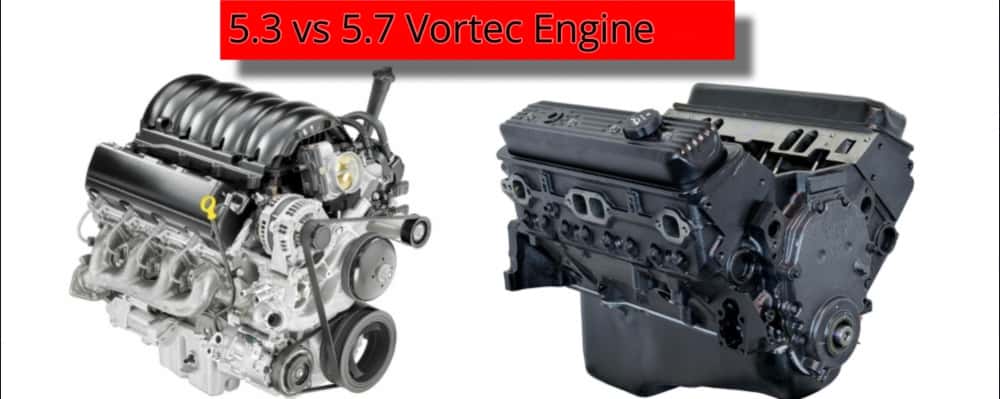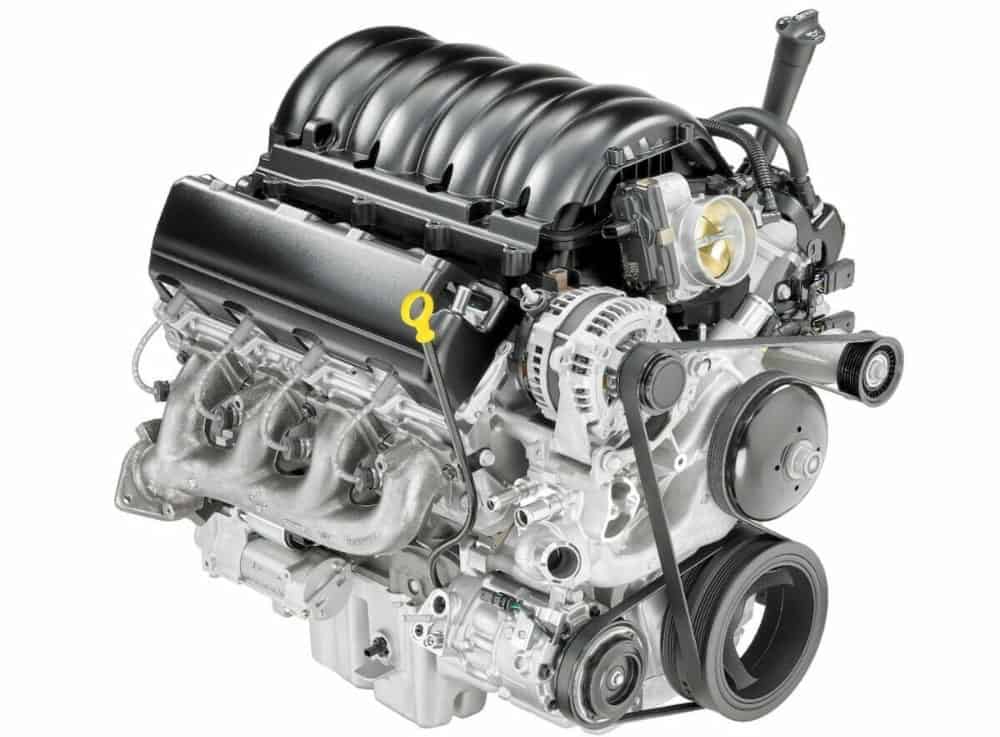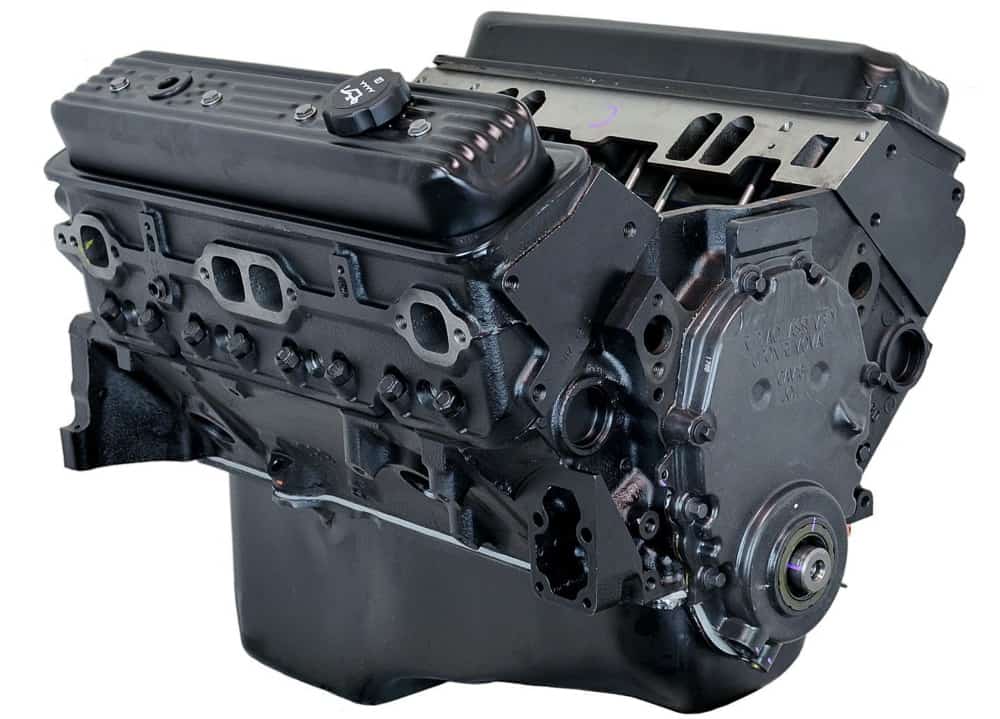
Since its debut in the market in 1985, the presence of the General Motors Vortec engine has increased, playing a significant role in consumer and commercial vehicles alike. Since then, drivers have fallen in love with the 5.3 and 5.7 Vortec model engines.
But how do these two Vortec engines compare?
Horsepower is the most significant difference between the 5.3 Vortec and 5.7 Vortec engines. The 5.7 features 255 HP, whereas the 5.3 boasts 285 HP. However, they also differ in torque, speed, and other factors that could sway a driver’s decision as to which one is the best.
In this article, we’ve compared the vital statistics between these two iconic motors. After reading it, you should clearly know which is the better choice based on your needs. Let’s dive in!
The History of the Vortec Engine
General Motors first mentioned the Vortec engine in an advertisement in 1984. However, it would only appear on the market in 1986. The company intended to create a more efficient combustion process by strengthening the air and fuel flow.
Though initially designed for vans and trucks, over the years, the Vortec technology has found its way into engines for cars as well. The 5.3 then debuted in 1999 with the Chevy Silverado truck. The 5.7 appeared earlier, in 1996.
Since their respective debuts, these Vortec engines have seen several updates and appeared in a wide variety of vehicles.
How Are They Different?
Do you want your vehicle to go faster? Or do you want to pull more weight? The 5.3 and the 5.7 are very similar, but their differences in critical metrics make one better than the other for specific tasks.
So let’s take a closer look.
| Measure | 5.3 Vortec | 5.7 Vortec |
|---|---|---|
| Horsepower | 285 hp | 255 hp |
| Mileage | 15 MPG (6.38 km/l) | 14 MPG(5.95 km/l) |
| Torque | 315 feet per pound (43.55 k-fm) | 340 feet per pound (47 k-fm) |
Horsepower
Horsepower is a very old measurement (initially conceived in the 1700s!), but it’s still the standard for determining an engine’s capacity for work.
We define it as a horse’s ability to lift 550 pounds (249.5 kgs) one foot (30.5 cm) in a second. At first, people used it to measure the strength of steam engines, and it’s stuck ever since. You’ll find it applied to motorcycles, buses, and everything in between.
But what does this mean for a vehicle? To put it simply, it’s how quickly your car or truck can accelerate. The higher the horsepower, the faster it reaches target speeds.
The 5.3 is built with 285 horsepower, whereas the 5.7 utilizes 255 horsepower. Note that these numbers do vary across years and models. However, the truth across all models is that the 5.7 Vortec engine has less horsepower than its 5.3 counterparts.
Keep in mind that greater horsepower means faster acceleration, not speed. Factors such as the vehicle’s weight determine its overall speed. So horsepower determines when you’ll reach your desired speed.
Miles Per Gallon
For many drivers, MPG can make or break their decision to purchase a vehicle. This is because MPG also determines fuel efficiency. The lower the MPG, the more you’ll spend on fuel for every mile your travel.
The good news is there isn’t much difference in MPG between the two. The 5.3 gets 15 miles per gallon (6.38 km/l), whereas the 5.7 gets 14 (5.95 km/l). But, once again, these numbers may vary slightly depending on the year of your engine.
Keep in mind that your MPG is dynamic. How, when, and where you drive can either help or hurt your mileage. The U.S. Department of Energy explains what these factors are here.
Of those mitigating factors, the one that’s of most interest is weight capacity. The more you tow or carry, the harder the engine needs to work, resulting in more spent fuel.
So, if you intend to haul with your vehicle, the miles per gallon will likely be less than the stated measurements.
Torque
Torque is related to horsepower, though it’s actually a separate force and measurement. As J.D. Power points out, torque can be thought of as how much energy an engine exudes, whereas horsepower is its peak performance.
Thus torque is the driving force of your car, and horsepower allows it to keep moving.
Another way to think of it is this: torque is what you feel when your car first starts moving. It’s the push that gets it on the road. Horsepower, by contrast, only matters once it starts moving.
Torque is vital to determining a vehicle’s towing capacity, but it’s important to all drivers regardless of their activities. Torque directly relates to how quickly you accelerate and how smoothly your ride handles when turning. The higher the torque, the greater these things will be.
The 5.3 is the weaker of the two, with 315 feet per pound (43.55 k-fm). The 5.7 hits 340 feet per pound (47 k-fm).
Some drivers may not notice the difference between these two because they’re so close, but for experienced drivers, the higher torque will be evident.
5.3 Problems

Owners of second and fourth-generation 5.3 engines complained of a higher than average oil consumption, resulting in more expensive oil changes.
In addition, the vehicle’s particle filter and the catalytic converter will also degrade faster, worsening the problem.
Third and fourth-generation 5.3 engines are also known to suffer a cracked cylinder head at higher rates than many of their contemporaries due to a manufacturing defect. Damage like this causes coolant to leak.
Finally, intake manifolds and their gaskets were another prevalent problem in the third generation.
While gaskets will eventually wear down over time, those shipped installed on the 5.3 would do much faster than average. In addition, manifold issues can result in loss of engine power while driving and idling.
5.7 Problems

As an older engine, the 5.7 doesn’t have some of the same mechanisms in place protecting the distributor. So when it’s experiencing problems, your engine won’t run as smoothly. It may even fail to start if the distributor is in especially poor shape.
The 5.7 also has less-than-ideal airflow. This contributes to its lower fuel efficiency, but it also creates higher emissions. It also means the engine won’t cool down as quickly, leading to overheating and related issues (such as cracked cylinder heads).
Which Engine Costs More?
The 5.7 engine usually carries a higher cost due to scarcity. The 5.3 replaced it in 2002 and is no longer in production. Given the lack of production and its popularity among truck enthusiasts, it can command a higher price.
The 5.3 is still in production as of 2023. Besides finding it in new cars (such as GMC Yukons and Chevrolet Silverados), it has a sizable presence on the secondhand market.
Why Does the 5.7 Have Such a Strong Following?
It’s unusual for a discontinued engine to develop the fandom that the 5.7 has. It’s been 20 years since GM discontinued it, but the aftermarket keeps it alive with replacement parts. How did this happen?
The most significant factor is the 5.7’s simplicity. It’s a straightforward engine, so much so that it’s easy for owners to perform maintenance and replace parts on their own. It also features fewer electronic components, which are much harder to repair.
Lastly, the previously mentioned distributor issues can result in spark plug failure. Often, the plugs or the wires themselves get covered in oil.
The dirty plugs and wires can lead to engine misfires, idling, and an all-around rougher experience. Fixing the distributor’s issues will prevent this, but you should still replace the plugs and wires.
With both engines, routine maintenance can prevent these issues from occurring or, at the very least, allow you to detect them early and mitigate the damage they could cause.
In any case, you should be fine finding replacement parts if needed, so don’t let these problems turn you off from switching to a 5.3 or 5.7 Vortec.
Final Verdict: Which One Is Better?
So which engine should you choose? When you look over these statistics, you no doubt notice how similar they are, and there’s no obvious winner. Ultimately, it comes down to what you want out of your vehicle.
If you need a more robust engine, the 5.7 Vortec really shines. Its power and overall efficiency make it ideal for those who want to tow without sacrificing much fuel in the process.
However, if speed, handling, and getting the most miles per gallon are your chief concerns, the 5.3 will deliver. You won’t have quite as much towing capacity, but you’ll still have plenty of strength and easy handling combined with slightly better fuel efficiency.
Conclusion
The Vortec engine rose to prominence in the 1990s, powering iconic trucks, vans, and other power-heavy vehicles.
Which one is best depends on what you need your vehicle to do and what you want to spend. The critical difference is that the 5.7 is no longer in production, though it lives on in the aftermarket.
Regardless of which one you choose, you’ll have a reliable engine with plenty of power and great mileage.
